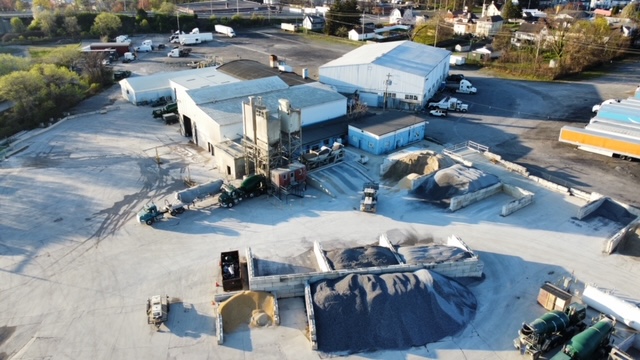Geo-referenced Image Capture
Using drones to calculate stockpile measurements makes it easy to compare your current stockpile volumes to previous surveys and track site progress.
Compare stockpile surveys to a final grade design file to calculate how much material you still need to add or remove.
Faster analysis speeds
Measuring stockpiles manually used to involve days or weeks of your employees’ time – and if you work in the construction industry, you’ll know that timing is everything. By transitioning to drone technology, you can get the job done in hours, or even minutes, allowing you to focus your team’s time and energy on more productive tasks.
In construction, you might be managing stockpiles of erodible materials. In this case, frequent measuring can be necessary – particularly after stormy weather. With the ability to measure and analyze stockpiles frequently, keeping your inventory up to date with more frequent analysis won’t be a problem.
Improved data accuracy
Commercial drone technology allows for far greater accuracy when measuring and managing stockpiles, in comparison with other methods. Gone are the days of conventional laser scanners, unable to analyze depression caves and undercuts. Drones provide a significantly more robust and precise reading.
The improved accuracy from drones for stockpile management begins with aerial imagery. Drone photography can capture far greater detail than traditional methods, allowing you to physically see the intricacies of your stockpiles. Following that, innovative photogrammetry software is specially designed to account for irregularities and provide you with detailed and accurate volume, mass, and value data.
Accuracy is vital for all industries to ensure accurate financial forecasting. For example, in the agricultural industry you might be stockpiling animal feed or manure. Improving your measurement data will give you a better understanding of your stock, minimizing waste and maximizing forecast potential – helping you avoid any unexpected bills.
Enhanced safety
Arguably the most important advantage to using drones for stockpile management is the enhanced safety it offers. Traditional methods would see workers navigating busy worksites around heavy machinery. This could result in serious injuries – leaving companies open to liability.
Health and safety are of great importance to all industries, particularly those that are high-risk, where workers are surrounded by hazardous materials and heavy machinery. Using drones to increase efficiency means humans no longer need to physically access dangerous sites to collect data, keeping your workers’ feet firmly on the ground.
Reduced costs
Everything we’ve mentioned so far also has the bonus of helping to reduce costs for your company. For example, improved accuracy and faster analysis will all help to improve your financial forecasting and tighten up your supply chain.
Knowing exactly what you have on site allows you to accurately measure how much more material you will need and when you will need it – helping you to plan and budget your costs more efficiently.
The reduction in manpower required to manage your stockpiles allows you to utilize your resources more wisely, focusing your workers’ time elsewhere while your drone does all the hard work for you.
No matter what industry you work in, using drones to increase efficiency, keeps your colleagues out of harm’s way and generates the time and energy needed to focus on more productive tasks is always beneficial to your business.

